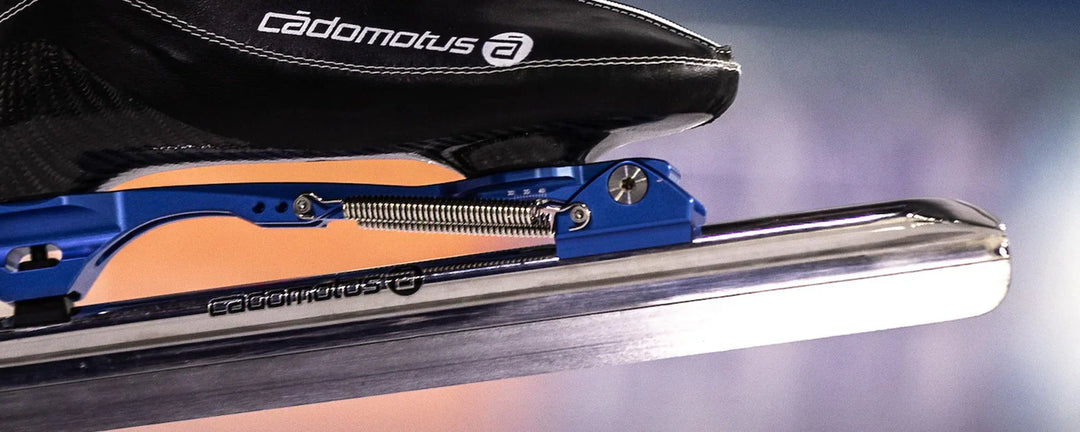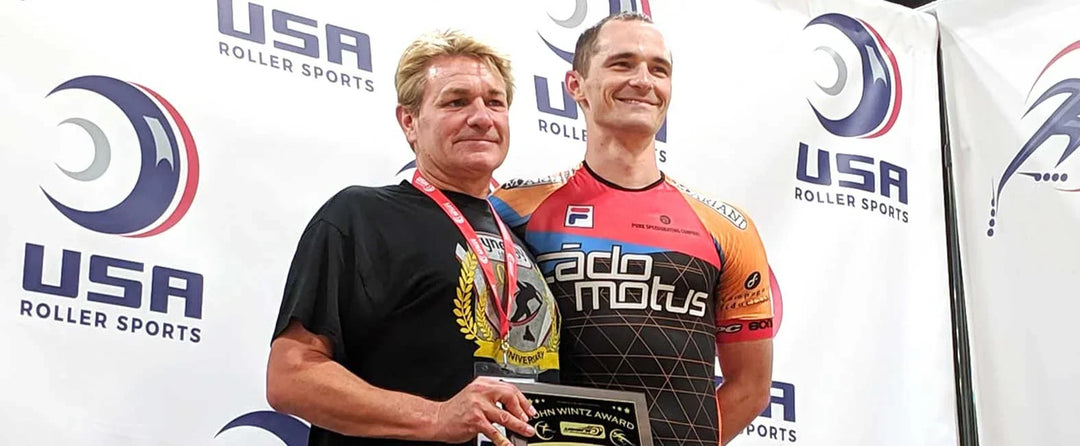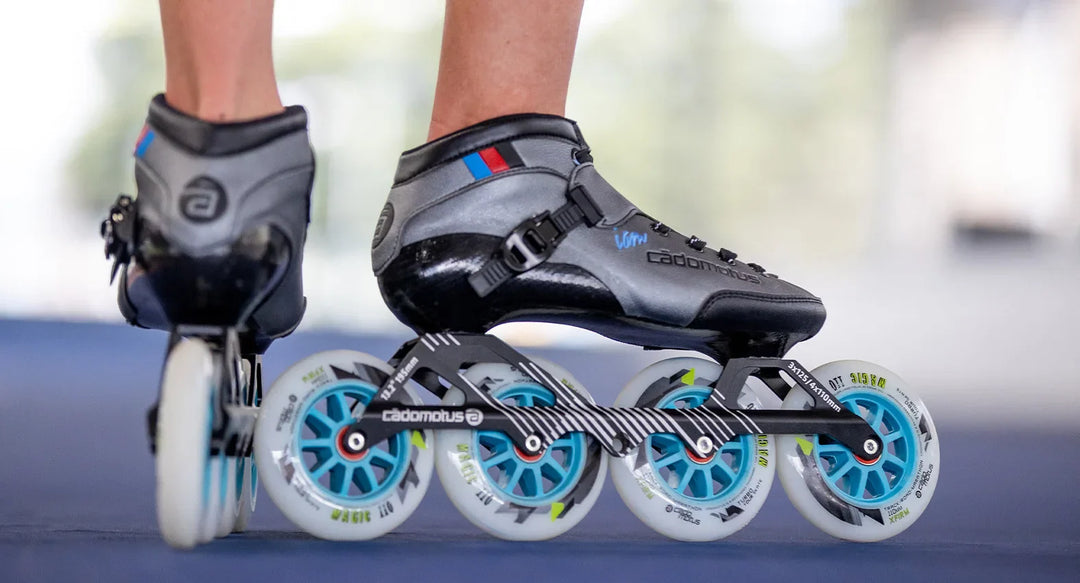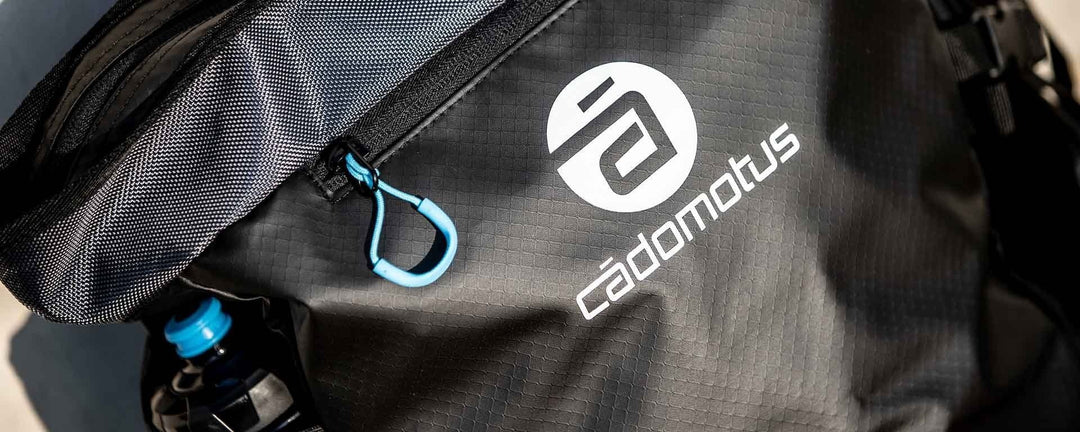Skating on 100, 110 or 125 mm inline wheels, differences explained
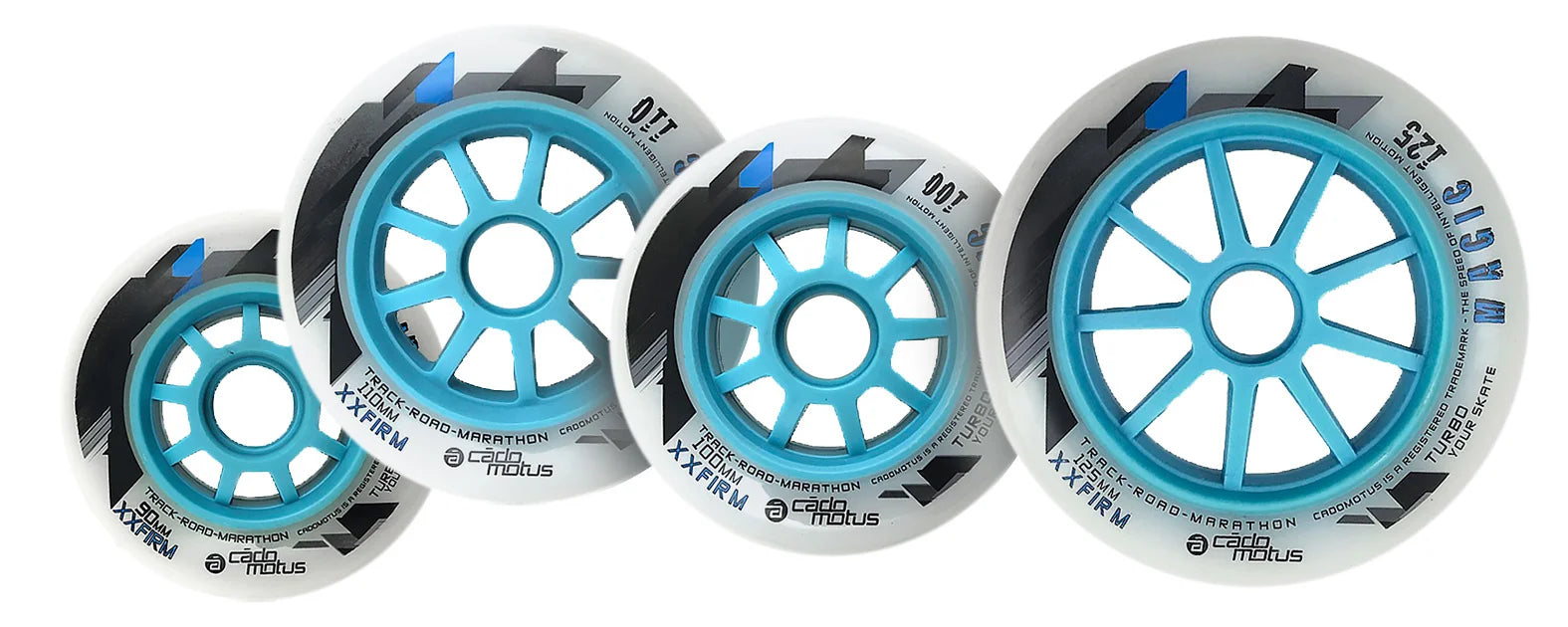
What are the differences between big and small wheels? The answer seems simple: the stronger and the more experienced you are, the bigger the wheels. And yet, there are more factors to consider, like the surface you skate on (track or circuit type), as well as your experience and skills. Which wheels are best for you? It all depends on your goals and your skating abilities.
Inline skates with three, four or five wheels
Skates have either three, four or five wheels. This number determines the size of your wheels and, to a large extent, the characteristics of your skate, like their speed, agility, grip and stability.
Nowadays, inline skates have a maximum of four wheels. Not that long ago, they could have up to five. Wheels were smaller back then: 80 or 84 mm, but with the arrival of 90 and 100 mm wheels, frames with five wheels of such diameters would have been too long and you wouldn’t have been able to skate corners. The fewer the wheels you have, the more agile you are.
A longer frame with more wheels, on the other hand, will give you more speed and stability. You will be more stable and experience more grip during the push-off, because your skate will be more efficient at rolling forward. If you have more wheels on your frame, they will automatically have a smaller diameter, which will bring you closer to the ground and make you feel more stable. Your wheels will wear out more slowly because the weight of your body is distributed over more wheels: a 4 x 90 mm wheel setup will take more time to wear out than a 3 x 90 mm setup.. The size of the wheels also affects the wear resistance, you can read more about this below.
Fewer wheels for skills build-up
It is easier to build skills, like steering, cornering and slaloming around pylons, with three wheels. You’re more agile and you can accelerate faster, and during short sprints, you can reach higher speeds, no matter your wheel size. It will also help you with your double-push: with three wheels, you should master faster this advanced inline skating technique, which consists in pushing off inwards then outwards with the same leg.
Women and children who have smaller shoe sizes can opt for a shorter frame with fewer wheels. From size 42 and up, it doesn’t matter anymore, as the frame size will often remain the same, independently of your number of wheels.
Bigger wheels for higher speed
Having bigger wheels also implies having fewer wheels and, often, a shorter frame, in order to preserve optimal agility while benefitting from the extra rotational inertia brought by bigger wheels. Watch the effects of rotational inertia in the video below.
The most important feature of bigger wheels is higher speed. This is the reason why those wheels are used a lot in marathon races. Bigger wheels also wear out more slowly because of their lower rotation speed, and are more comfortable because they cushion most vibrations caused by uneven surfaces, like rough tarmac or damaged grounds. Last but not least, three-wheeled frames are also necessarily lighter.
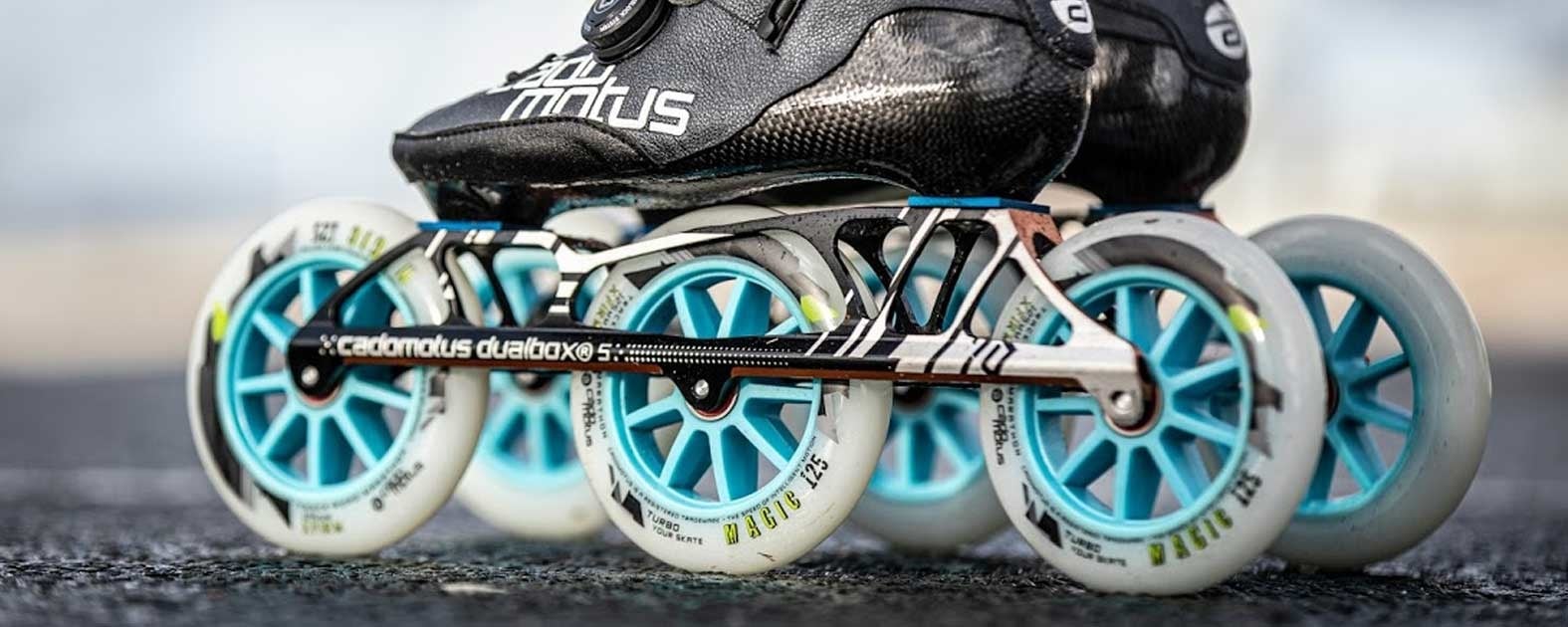
The downside of bigger wheels is that you are higher off the ground, and thus technically less stable. If you are an experienced inline skater, you will get used to it pretty quickly and it won’t be a problem. To optimize your balance and stability, keep a low body position, with your knees bent. Note that this position requires a lot of strength and stamina.
Smaller wheels for faster acceleration
Small wheels work like a small chain ring on a road bike: with them, you can accelerate faster. That’s the reason why inline skaters use 110 mm wheels for 100-meter sprints and not 125 mm wheels. Similarly onthe shorter 200-meter track, most skaters will be at an advantage with smaller wheels : more stability in the corners and more powerful push-offs.
In the video below, watchhow wheels behave differently according to their sizes: the smaller wheel accelerates faster and the bigger wheel can generate more speed.
In this blog, you can read more about the effects of rotational inertia
Which wheel size should I choose?
In short, you could say that 3 x 125 mm and 4 x 110 mm setups are suitable for powerful skaters and competitors. 100 mm setups work well for smaller-buit skaters, including juniors and women, whereas 3 x 90 mmwheel setups are best for children. Thus they can get used to bigger wheels while keeping their agility and enjoying light-weighted skates, which will help them build up their skills set, and could eventually turn them into future champions.
Wheel sizes and features
|
84/90 |
100/110 |
125 |
|
|
Speed |
⭐ |
⭐⭐⭐ |
⭐⭐⭐⭐⭐ |
|
Acceleration |
⭐⭐⭐⭐⭐ |
⭐⭐⭐ |
⭐⭐ |
|
Stability |
⭐⭐⭐⭐⭐ |
⭐⭐⭐⭐ |
⭐ |
|
Weight |
⭐⭐⭐⭐⭐ |
⭐⭐⭐ |
⭐⭐⭐⭐ |
|
Agility |
⭐⭐⭐⭐ |
⭐⭐ |
⭐⭐⭐⭐ |
|
Comfort |
⭐⭐ |
⭐⭐⭐ |
⭐⭐⭐⭐ |
|
Wear |
⭐⭐⭐ |
⭐⭐⭐⭐ |
⭐⭐ |
|
Price |
⭐⭐⭐⭐⭐ |
⭐⭐⭐ |
⭐ |
|
Frame length |
10.0” tot 12.0” |
12” tot 13.2” |
12.4” tot 13.2” |
|
Shoe size |
31-42 |
37-47 |
37-47 |
|
Number of wheels |
3-5 |
3-4 |
3 |
|
Use |
Kids inline skates |
Competiton inline skates for kids |
Competition inline skates for experienced recreational skaters |
|
|
Inline skates for beginners |
Skates for intermediate to experienced recreational skaters |
|
|
|
Urban-, slalom- and aggressive skates |
Competition inline skates for the track |
|
With bigger wheels, you can skate faster, but you will have less stability. They are better suited for trained athletes or more experienced inline skaters, and generally not recommended for beginners. If you are not yet fully stable on your skates, you will have even less control with bigger wheels, and a harder time going fast. In that case, you will enjoy more a 100 mm or a 110 mm frame and, since you will be more stable, you will eventually get more speed with them as well.
There is also an intermediate option: a boot that offers you more stability. The semi-race boot will give you extra stability for when you decide to give the bigger wheels a try. Be aware that you will have less freedom of movement at the ankle compared to lower inline skate boots.
All in one solution
Do you want to try different wheel sizes? Cádomotus has an all-in-one solution for you: easily alternate between smaller and bigger wheels with our TR3 frames, that will go with out Versatile and Agility skates, and the Dualbox®6 inline frames
[NEWSLETTER]
